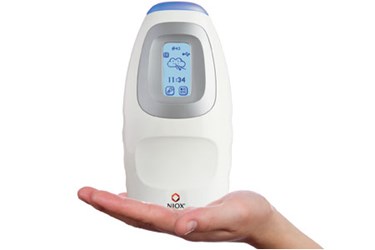Beyond Genetics: Broadening The Definition Of Personalized Medicine

By Elizabeth A. Brooks, President and CEO, Decision Driver Analytics
Personalized medicine proposes the customization of healthcare, with medical decisions, therapies, and/or products being tailored to the individual patient and the anticipated outcome being improved patient care. Although the definition has broadened over time, the term was originally coined in the context of utilizing a patient’s genetics to “personalize” medicine. Recent research, such as the Human Genome Project, has enabled significant improvement in the understanding of the impact of genetics in disease. As a result, numerous treatments in a wide range of therapeutic areas have been undertaken.
However, if the goal of personalized medicine is to improve patient care, its definition must include not only the individual patient, but also the patient class. Patient education programs that address, for example, adherence to prescribed medical protocol, can have a greater effect when program materials are tailored to a specific class of patients, such as children or the elderly.
Throughout the drug and medical device development community, there are myriad opportunities to personalize medicine that go far beyond genetics. In this article, we will focus on how one innovative medical device proves the value of broadening our definition of the term personalized medicine.
Better Respiratory Management
One class of patients that benefits from a more personalized approach to its treatment includes patients with breathing disorders, such as asthma or chronic obstructive pulmonary disease (COPD). Until the Swedish-based medical technology company Aerocrine introduced the NIOX MINO medical device in 2007, the methods of measuring airway inflammation — induced sputum or airway biopsy — were invasive, time-consuming, expensive and not always available.
Aerocrine researchers discovered that patients with allergic airway inflammation generally have higher than normal levels of nitric oxide (NO) in their exhaled breath. By measuring the fractional exhaled nitric oxide (FeNO), clinicians can evaluate allergic airway inflammation in patients. Because the device has the capability to diagnose Th2-driven airway inflammation, it helps physicians distinguish between asthma and other acute or chronic conditions and helps determine the value of treating patients with inhaled corticosteroids (ICS).
Additionally, because the medical device can distinguish minute differences in FeNO, it is a valuable tool in patient management, particularly in adjusting medications to precisely meet the needs of individual patients, thereby meeting the goals of personalized medicine.
With access to a fast, simple and highly accurate method of measuring Th2-driven inflammation, clinicians are able to refine individual patient management. This allows the development of more focused and effective patient diagnostic and treatment strategies to improve clinical outcomes, further proving the point that customizing patient treatment can go beyond the world of genetics.
Educating Patients … And Payers
To help introduce the NIOX MINO in the U.S., Decision Driver Analytics developed two health economic models — one showing the cost-effectiveness of FeNO measurement as an aide to asthma diagnosis and one showing FeNO cost-effectiveness when used to guide asthma patient management. These models — particularly the asthma management model -- identified the primary areas where FeNO use is predicted to reduce costs by reducing emergency room visits and hospitalizations.
However, Aerocrine and Decision Driver determined that these modeled cost savings cannot be achieved if other factors are at work to undermine the benefits of FeNO monitoring. Working in collaboration with payers, Aerocrine is designing focused patient education and outreach programs to influence those patient behaviors that could lead to noncompliance. These programs are tailored to speak directly to a particular class of patients, such as children or patients with a specific comorbidity and are also aimed at family members’ behaviors, such as smoking, that may compromise treatment.
Going Beyond Genetics
As new technologies and diagnostic techniques are introduced, we will have a greater ability to make fine distinctions between different disease states that may have nothing to do with the patient’s genetic makeup but will certainly improve patient care. Additionally, as the definition of classes of patients can be refined, approaches to the medical management of disease as well as ancillary care services, such as patient education, can become more and more focused and effective.
Obviously, our genes define specifically who we are and can play a significant role in developing new, individualized treatments and diagnostic techniques. However, genes are not the only route to finding the best treatments for individual patients. It is important to remain open to all the possibilities that a broadened definition of personalized medicine offers.
 About The Author
About The Author
Prior to launching Decision Driver Analytics in 2006, Dr. Brooks led the health economics group at PPD, Inc., managing business and strategic development for PPD’s medical communications, health economics and late-stage study services. A recognized expert in her field, she is a frequent speaker at industry conferences and has published peer-reviewed articles on a variety of mathematical and health economics topics. She holds a Ph.D. in mathematics from Duke University.
NIOX MINO photo credit: Aerocrine
